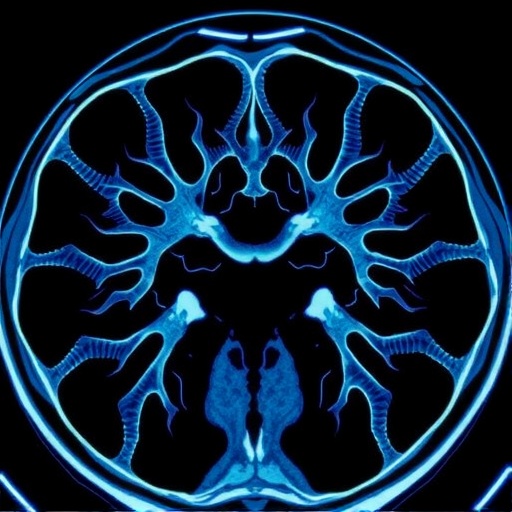Recent advancements in the field of medical imaging have stirred significant interest in alternative methods for diagnosing osteoporosis, particularly in patients with ankylosing spondylitis (AS), a chronic inflammatory disease known to lead to significant spinal deformities, often referred to as “bamboo spine.” Traditional methods of assessing bone mineral density (BMD) typically rely on dual-energy X-ray absorptiometry (DXA), which, while widely used, may not provide an accurate reflection of the bone’s structural integrity in all patient populations. A new study presents a compelling case for utilizing computed tomography (CT) based Hounsfield units (HU) as a diagnostic tool for evaluating osteoporosis in AS patients.
The research has demonstrated an approximately 78% reclassification rate of patients as having osteoporosis when leveraging a CT-based HU cut-off value of less than 135. This stark contrast compared to the DXA-based classification casts doubt on the efficacy of current standard practices and raises vital questions about the necessity for revision in clinical guidelines concerning osteoporosis diagnosis. The implications of these findings are profound, suggesting that a significant subset of individuals previously undiagnosed may indeed be at risk of osteoporosis-related complications.
Understanding the intricacies of BS, or “bamboo spine,” as visualized through plain spine radiographs is crucial for improving the accuracy of DXA evaluations. In patients suffering from AS, the abnormal anatomy due to fibrous tissue and calcification often obscures the real bone mineral density readings, which may lead to under-treatment or misdiagnosis. As such, disregarding CT-based assessments could perpetuate a cycle of inadequate care for an already vulnerable population.
In contrast, the CT scans provide a more nuanced view of the bone’s microarchitecture and density. The advanced imaging captures variations in bone structure that DXA might overlook, thereby offering cost-effective and precise assessments that could lead to improved patient outcomes. This distinction is particularly important for physicians aiming to personalize treatment plans for AS patients, hoping to reduce the likelihood of serious osteoporosis-related complications, such as fractures.
Furthermore, the study underscores the necessity of robust validation through larger population datasets and prospective trials. While preliminary results are promising, they should be viewed as part of an evolving discourse surrounding diagnostic imaging technologies and their application in clinical practice. Conclusively, the transition from established methods to novel diagnostic frameworks must be undertaken with caution, in order to firmly ground any shifts in practice in scientifically validated evidence.
An important aspect of conducting such research involves the meticulous analysis of imaging techniques and an understanding of their biological implications. The conversion of CT-scan-derived HU into clinically significant interpretations necessitates a foundational knowledge of both technology and pathology. Principal investigators emphasize that increasing familiarity with these diagnostic imaging modalities among healthcare providers can significantly alter the landscape of osteoporosis diagnosis and management.
This novel approach prompts a deeper investigation into the relationship between imaging technology and patient care. As the research community continues to explore these intersections, the findings rooted in CT-based assessments may prompt a reevaluation of osteoporosis screening protocols, particularly among high-risk populations. In addition, addressing gaps in understanding the correlation between Hounsfield units and true bone density requires researchers to establish clear guidelines and training not only for radiologists but also for primary care providers working on the front lines of patient consultations.
A key takeaway from this investigation is the emphasis on interdisciplinary collaboration between radiologists, rheumatologists, and primary care physicians. The discussion around AS and its variants, such as BS, necessitates a comprehensive understanding that transcends the conventional boundaries of specialty training. Integrated approaches are crucial for establishing broader consensus regarding diagnostic criteria and treatment pathways, thereby fostering an environment where innovative methodologies can flourish.
As this line of inquiry unfolds, it is essential to keep the patient perspective in sight. Individuals living with ankylosing spondylitis often face multiple challenges, from chronic pain to mobility issues, all complicating their quality of life. The lack of accurate osteoporosis diagnosis compounds these difficulties and may lead to further complications down the line. Hence, facilitating access to improved imaging techniques promises to enhance not just the precision of osteoporosis assessments, but also the overall management of AS and related health challenges.
The prospect of adopting CT-based measurements also poses an economic consideration. As healthcare systems grapple with budget constraints and the high cost of advanced imaging technologies, the challenge will lie in demonstrating that such investments yield long-term savings in both healthcare costs and human suffering. Stakeholders must critically assess the economic benefits of broader adoption of CT-based diagnostic strategies against traditional methods, weighing short-term expenses against potential future savings linked to improved patient outcomes.
In summary, this emerging evidence advocating for CT-based assessment of osteoporosis in the context of ankylosing spondylitis sheds light on a critical area in the realm of diagnostic radiology. Long-term implications for clinical practice may see a transformative shift if further validations substantiate the findings presented. The intersection of technology and medicine continues to evolve, and this research could mark a pivotal moment in improving outcomes for a significant population burdened by chronic disease.
In conclusion, the discussion surrounding CT-based Hounsfield unit assessments serves as a reminder of the continuous advancements within medical imaging and their potential far-reaching implications. As clinicians and researchers pursue innovative solutions to age-old problems, it is imperative to embrace new methodologies and integrate them thoughtfully into practice to ensure a future where all patients receive precise and effective care.
Subject of Research: Alternative osteoporosis assessment methods in ankylosing spondylitis patients
Article Title: CT-based Hounsfield unit as an alternative osteoporosis assessment in ankylosing spondylitis patients with bamboo spine.
Article References:
Hsiung, W., Lin, HH., Yao, YC. et al. CT-based hounsfield unit as an alternative osteoporosis assessment in ankylosing spondylitis patients with bamboo spine.
Sci Rep 15, 35540 (2025). https://doi.org/10.1038/s41598-025-19528-z
Image Credits: AI Generated
DOI: 10.1038/s41598-025-19528-z
Keywords: Osteoporosis, ankylosing spondylitis, Hounsfield unit, CT imaging, bone mineral density




